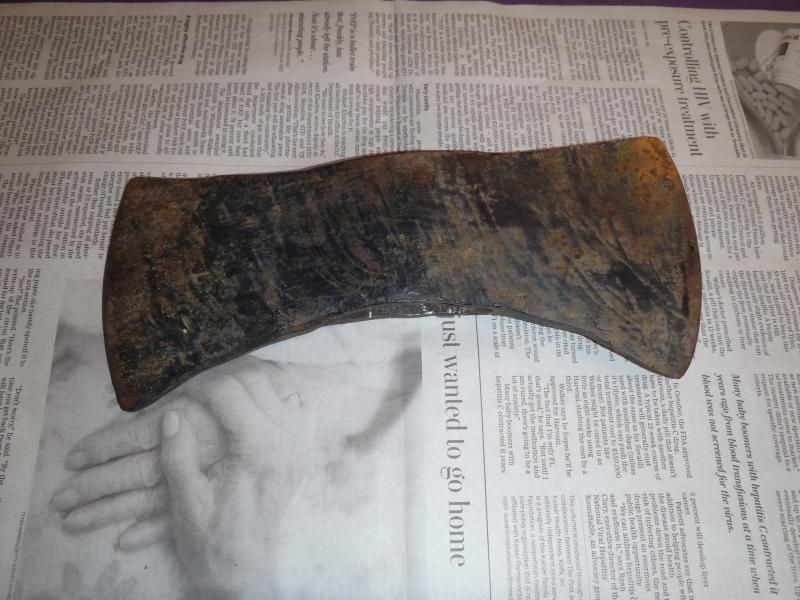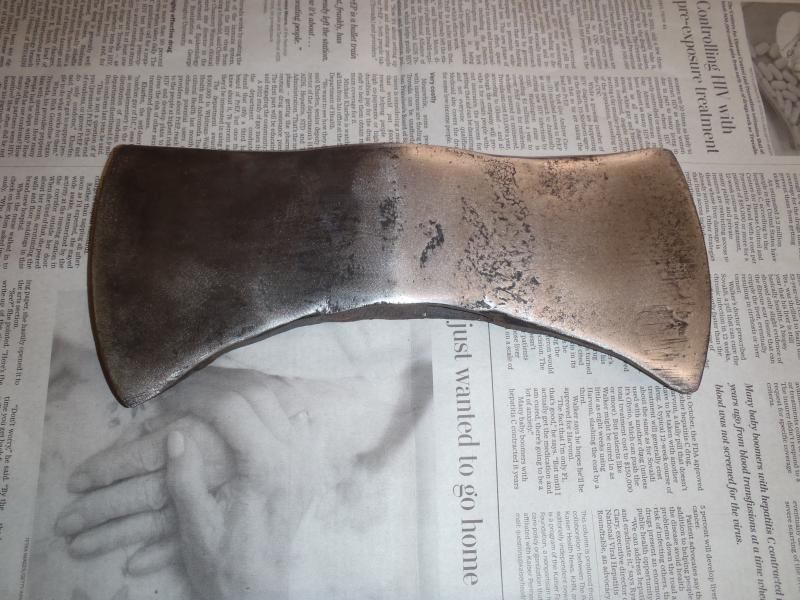G
Guest
Guest
I’m not an axe guy, and if I bring a wood cutting implement I usually bring a saw. But I came across an axe head in North Carolina I want to refurbish.
I know some of the history of this axe; it likely belonged to a forester named Julian Weatherbee, a graduate of the Biltmore Forestry School in the early 1900’s
https://www.nabt.org/websites/insti...biology_teacher/2012/ABT_Online_Sept_2012.pdf
(The above article is well worth reading, if only for the realization of what Biltmore graduates were required to learn)
I took it to Council Tools in Lake Waccamaw and they identified it as a Michigan 3.5, probably made by them at least 60 years ago (or 100 years ago). I learned more from their historian in 20 minutes that I ever knew about axes.
http://www.counciltool.com/
The 3.5 refers to the weight in pounds of the axe, although this one, after 100 years of use and sharpening (and my first round of light cleaning), weighs 3.25 lbs. It was sharpened as a forester would use it, with one blade thinner and sharper and one thicker and more blunt. The sharp end for chopping trees and limbs, the more blunt end for chopping roots.

The worst of the rust and grime is off after a couple of sanding sessions and the revealed axe head is intriguing. There are some circular areas on the business ends of the blades that I would guess to be tool marks and the sharp end/blunt end are more readily apparent.

My plan is to return the refurbished axe to the widow of Weatherbee’s grandson, and maybe ask that it be hung in some place of honor and not used to chop yard debris. But after sanding off the grime I don’t know nothing ‘bout rebirthing no axes.
Oldie? Ppine? One of you axe aficionados – how should I proceed with the refurbishment and preservation?
I know some of the history of this axe; it likely belonged to a forester named Julian Weatherbee, a graduate of the Biltmore Forestry School in the early 1900’s
https://www.nabt.org/websites/insti...biology_teacher/2012/ABT_Online_Sept_2012.pdf
(The above article is well worth reading, if only for the realization of what Biltmore graduates were required to learn)
I took it to Council Tools in Lake Waccamaw and they identified it as a Michigan 3.5, probably made by them at least 60 years ago (or 100 years ago). I learned more from their historian in 20 minutes that I ever knew about axes.
http://www.counciltool.com/
The 3.5 refers to the weight in pounds of the axe, although this one, after 100 years of use and sharpening (and my first round of light cleaning), weighs 3.25 lbs. It was sharpened as a forester would use it, with one blade thinner and sharper and one thicker and more blunt. The sharp end for chopping trees and limbs, the more blunt end for chopping roots.

The worst of the rust and grime is off after a couple of sanding sessions and the revealed axe head is intriguing. There are some circular areas on the business ends of the blades that I would guess to be tool marks and the sharp end/blunt end are more readily apparent.

My plan is to return the refurbished axe to the widow of Weatherbee’s grandson, and maybe ask that it be hung in some place of honor and not used to chop yard debris. But after sanding off the grime I don’t know nothing ‘bout rebirthing no axes.
Oldie? Ppine? One of you axe aficionados – how should I proceed with the refurbishment and preservation?
